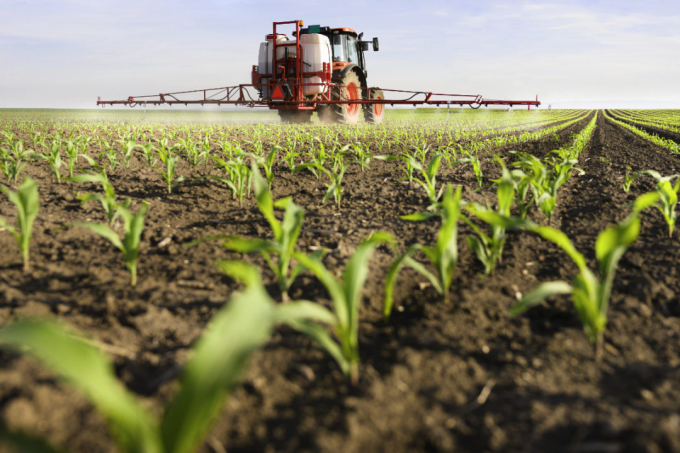November 26, 2025 | 20:22 GMT +7
November 26, 2025 | 20:22 GMT +7
Hotline: 0913.378.918
November 26, 2025 | 20:22 GMT +7
Hotline: 0913.378.918

Photo: Adobe stock
The latest modeling effort from the University of Illinois examines the role of pre-growing season weather on soil nitrogen dynamics and end-of-season corn yield.
The new study, “Assessing the impacts of pre-growing-season weather conditions on soil nitrogen dynamics and corn productivity in the U.S. Midwest,” was published in Field Crops Research.
“When farmers plant corn in spring, they already know what happened during the pre-growing season, from the previous fall to the spring,” said Ziyi Li, doctoral researcher at U of I and lead author on the new study, in a news release. “Unlike the upcoming growing season, which we can’t reliably forecast, we can use pre-growing season information to guide farmers to adjust their fertilizer application.”
Li used an advanced agroecosystem model known as ecosys to understand the correlation between temperature and precipitation in the pre-growing season with soil inorganic nitrogen content and yield.
“The ecosys model has been extensively used for a lot of different cases for agriculture, and this study further demonstrates that ecosys can perform well for simulating nitrogen cycles,” said Kaiyu Guan, associate professor at U of I and principle investigator for the study, in a news release. “The validation data set we used came from decades of nitrogen trials conducted by our collaborators at Illinois and other Midwestern states. We found the model actually can reproduce these patterns, not only the Illinois data, but patterns from the broader Midwest.”
Li’s model found increased nitrogen leaching in wetter pre-growing seasons, leading to a 5 to 14% yield reduction when no spring fertilizer was applied. Even when 150 lbs nitrogen per acre was applied, the 2018 Illinois yield dropped 1 to 3% due to heavy pre-season precipitation.
“In our analysis, we found applying more fertilizer can mitigate and even eliminate the yield loss induced by excess pre-growing-season precipitation,” Li said. “Based on our model, if an Illinois farmer applies 150 lb of nitrogen per acre, the 1-3% yield loss can be prevented by adding about 16 lb more nitrogen.”
Reduced soil microbial activity and enhanced leaching also reduced soil inorganic nitrogen in colder than normal pre-growing seasons.
“The effects of cold pre-growing season temperatures on yield cannot be eliminated by adding additional fertilizer,” Li said. “That’s because the temperature not only affects the nitrogen content in soil, but also seems to limit early growth in ways that affect yield potential, even if weather returns to normal later.”
Li said the model could improve current nitrogen use calculators. In the meantime, farmers looking to fine tune fertilizer use may want to consider strip trials, said Emerson Nafziger, emeritus professor at U of I.
“High rates of nitrogen tend to produce dark green corn, but lower rates might do that as well,” Nafziger said, in a news release. “The only way to know if you used too much nitrogen is to compare the rate you used to a lower rate in the same field. A strip in the field with a lower rate, or higher if the rate in the field is moderate [less than 200 lb per acre from all sources], is a great way to gain confidence in lowering nitrogen rates in the future”.
(Agriculture.com)

(VAN) A new study reveals how the simultaneous effects of ocean acidification, salinity and loss of oxygen are making the world more fragile.

(VAN) Hopes are growing that the creation of the first 3D turkey gut model could be a turning point in the battle against the virulent blackhead disease.

(VAN) Tyson, America’s biggest meat supplier, plans to shutter one of its largest beef processing plants as the industry continues to struggle with low cattle supplies and political pressure from Washington.

(VAN) New FAO study shows how digital solutions are empowering farmers and fishers to prevent losses and build resilient agrifood systems.

(VAN) Brazil's COP30 presidency pushed through a compromise climate deal on Saturday that would boost finance for poor nations coping with global warming but that omitted any mention of the fossil fuels driving it.

(VAN) Poultry farmers in the UK have been warned that they could face one of the worst winters yet for bird flu.

(VAN) Prices of main-crop paddy have risen sharply, with jasmine rice hitting 16,100 baht per tonne — the highest level in years.